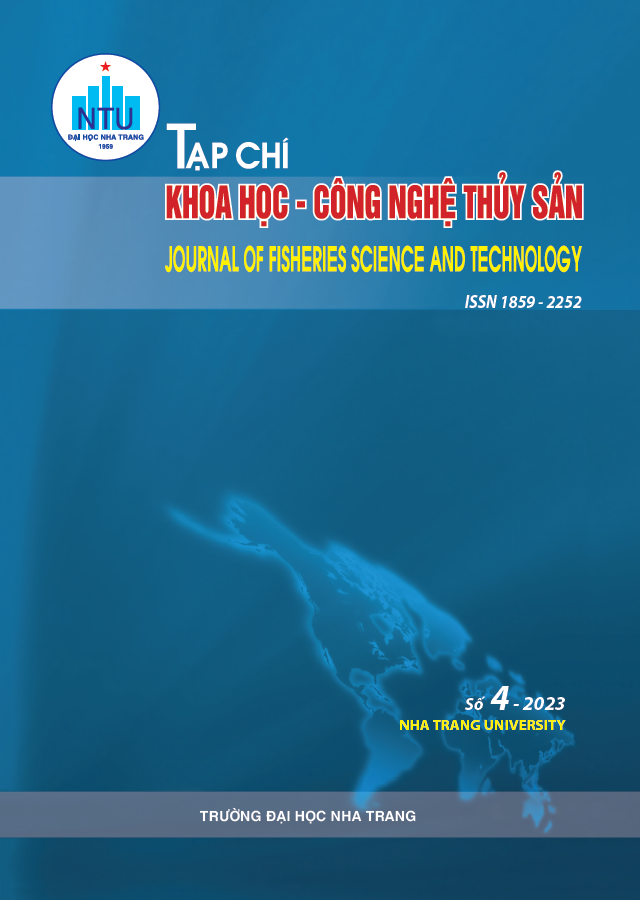##plugins.themes.huaf_theme.article.main##
Abstract
The aim of this experiment was to determine the effects of light intensity on the scaly giant clam (Tridacna squamosa) from the pediveliger stage to early Juveniles of 1-2mm in length. The larvae were randomly assigned to four different light intensities (2,000 lux, 4,000 lux, 6,000 lux, 8,000 lux) in 1m3 tanks with four replecates at salinity of 31.5 ± 0.26ppt, temperature of 28.0 ±0.34, and pH 7.9-8.1. The initial rearing density was 5 larvae/ml. The experiment lasted for 26 days. The larvae were fed with a mixture of unicellular algae, including Nannochloropsis oculata, Isochrysis galbana and Chaetoceros muelleri (with a ratio of 1:1:1) with density ranged between 6,000 and 9,000 cells/ml. The results showed that light intensity at 4,000 lux obtained the highest growth performance and survival rates of scaly giant clam larvae (P<0.05). After 26 days, the shell length and height of early juveniles reached 1,036.2µm and 1,032.1µm, respectively. The average growth rate of shell length and height obtained 30.81 and 31.82 µm/day, respectively, and the survival rate was 45.0%.
Initial results show that in order to improve the growth and survival rates of scaly giant clam larvae from the settlement stage to 1-2 mm sized seed, a light intensity of 4,000 lux should be used..
Key words: light intensity, growth, survival rate scaly giant clams, Tridacna squamosa.

